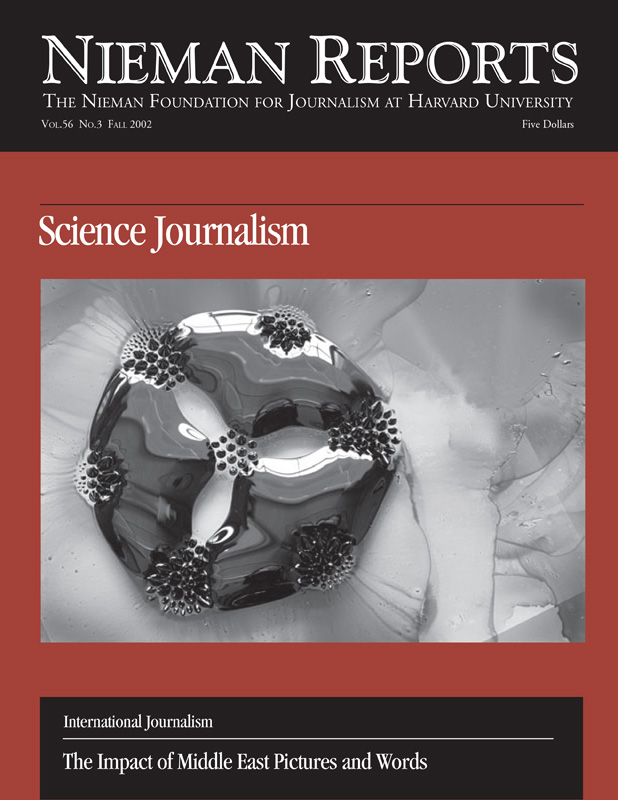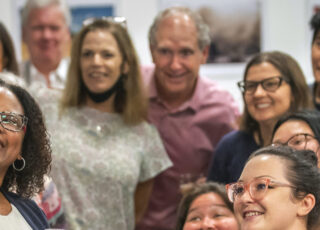ISSUE
Fall 2002

Science Journalism
Those who report on science have never been better prepared to do so, according to Los Angeles Times science and technology writer Robert Lee Hotz, whose insights open our section on science journalism. But as Hotz also observes, the challenges these reporters confront have never been larger: Newsroom cutbacks mean the reporters “are stretched to cover increasingly complex science stories ….” And their task is made harder by the dearth of impartial sources, forcing them “to look as hard at the scientists as we look at the science itself.” – Melissa Ludtke, Editor
